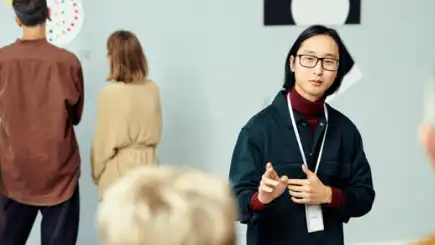Learn art history with online courses and programs
What is art history?
How has the definition of art changed over time? What do certain stylistic choices say about a specific period or culture? These are the types of questions that can be explored through the lens of art history.
Art history helps us make sense of the various art mediums that can include painting, sculpture, architecture, furniture, jewelry, photography, video, performance art, and much more. By studying the history of art, we can better understand the cultural and political context of different artistic movements and works of art, gaining insight into the values, ideas, and beliefs of both past and current societies. We can learn how different cultures express themselves through art and why that expression may have changed over time, giving us greater appreciation and understanding of the artworks and the people and movements behind them.
Studying art history also allows us to recognize the technical skill and creativity behind each work. Learn about the formal elements of art, including line, form, color, composition, and symbolism. Or study art theory and criticism. Enroll in art history classes online offered through edX and begin thinking more critically about how culture has influenced the design of everything from the buildings that we live and work in to the fashion that we wear every day.

Browse online art history courses
Stand out in your field
Use the knowledge and skills you have gained to drive impact at work and grow your career.Learn at your own pace
On your computer, tablet or phone, online courses make learning flexible to fit your busy life.Earn a valuable credential
Showcase your key skills and valuable knowledge.Art history course curriculum
The history of art is vast, and online art history courses can cover everything from walls of prehistoric cave dwellers to the art movements of the Renaissance. Learners interested in art history may encounter coursework on topics including, but not limited to:
The fundamentals of historical analysis and interpretation
Critical thinking and analysis related to art
The relationships between art and science, economics, and culture
The relationships between different people of different time periods and art
Interdisciplinary arts
Boundary-pushing art and art forms
Museum curation approaches
Explore how culture and art have shaped each other across the globe in every time period. Begin learning today.
Explore art history jobs
Learning about art history can propel you down many exciting and creative career paths. In addition to potentially becoming an art historian, you can consider pursuing a number of different jobs including:
Art gallery manager
Art critic
Arts administrator
Art conservator
Auction house specialist
Exhibition designer
Art dealer
Art teacher
Museum curator
What kinds of skills are needed in these fields beyond knowledge of art and art history? It can depend. For example, museum curators may be required to demonstrate the following competencies:Footnote 1
Preservation: plan, expand, and maintain collections.
Research: perform scholarly, applied, and object research and analysis.
Communication: develop exhibits, public relations campaigns, educational projects, and advocacy initiatives.
Digital literacy: use and maintain databases and other technology needed for curatorial functions.
Management/leadership: supervise and motivate colleagues; represent the institution in public.
Sustainability: practice being good stewards of the environment, communities, and resources.
But each role is different and will have different educational, skills, and experience requirements. Before starting down a specific learning path, consider your personal and professional goals and research what might be required for specific roles. edX offers a variety of bachelor’s degree programs, master’s degree programs, individual courses, and boot camps in a range of disciplines that may help you achieve your professional aspirations.
Last updated
